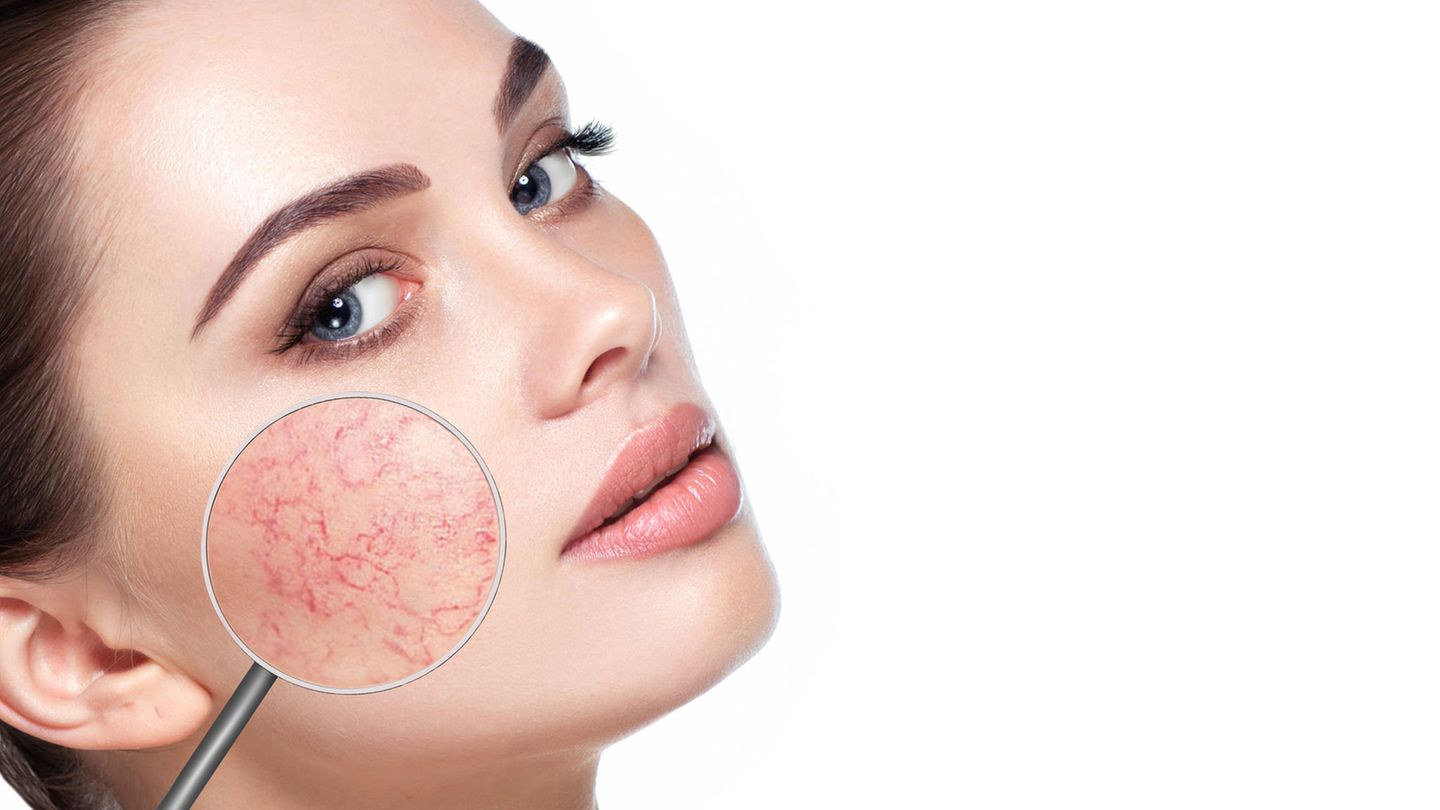Couperose
Red veins on the face: where they come from and what you can do about them
Copy the current link
They shimmer through the skin in the cheek and nose area: red veins are a cosmetic problem, but are associated with great suffering for many sufferers. How can this be changed?
From a medical perspective, there is no health problem if fine veins appear on your face. The correct term for these symptoms is couperose: This is a harmless enlargement of the blood vessels (telangiectasia) that is hereditary. It occurs more frequently in women over the age of 30 and is considered an early form of rosacea – a chronic skin disease. There are three different stages, the first of which is manifested by red veins in the cheeks and nose area, which become visible due to an expansion of the blood vessels under the skin. The affected area may also be temporarily red. You can find out how to correctly interpret and treat the symptoms here.
Couperose: These are the first signs
The red veins on the face usually only appear temporarily at first, but they can also remain permanently. They cause unpleasant side effects, such as burning or itching, and often lead to the skin becoming drier and more sensitive. In the worst case, reddening of the skin can occur, which persists due to blood congestion – but then it is no longer called couperose, but rather rosacea: Once the capillaries (veins) in the cheek and nose area are permanently dilated, the skin looks constantly red . If you are already prone to weak connective tissue and, as a result, spider veins or varicose veins, you are more likely to also get couperose. Unfortunately, this also applies to people with particularly light skin and blonde or reddish hair – they have red veins on their face more often than other types.
These factors promote couperose
As if it wasn’t bad enough that our genetic makeup can contribute to suffering from couperose, there are even more factors that can promote red veins on the face. The most common reasons for blood congestion or increased blood flow to the capillaries in the cheeks and nose are stress, high blood pressure, too much sun, excessive physical activity and excessive amounts of exercise or even strong temperature fluctuations. In other words: if you often go to the sauna, for example. This can cause the blood vessels under the skin to dilate temporarily or permanently; the exact course cannot be predicted for anyone. However, the fact is: you can relieve the symptoms and counteract couperose.
Here’s how you can treat couperose
The bad news is that if you already suffer from red veins on your face, they cannot be completely eliminated. But the good news is: you can treat couperose. And in such a way that the – or at least concealed. To avoid irritating your skin even further, you should only use products that are fragrance-free and do not contain preservatives. The same applies to essential oils, as they promote blood circulation in the skin and thus also couperose. It’s best to rely on one which has a calming and anti-inflammatory effect due to its ingredients (including panthenol, niacinamide, echinacea, ergothioneine and evening primrose oil).
Conversely, you should avoid greasy products that can clog your pores and irritate your skin. If you not only want to soothe and care for the red capillaries on your face, but also conceal them, you can use one Use – it counteracts reddened skin as a complementary color and softens visible veins. If the couperose has progressed to such an extent that no treatment methods are noticeably working, you can consider laser treatment. It ensures a reduction of up to 75 percent of the red veins on the face. However, this method also comes at a hefty price.
Tip: If your face really starts to glow, you can counteract acute couperose with these home remedies: Place a damp washcloth on the affected areas or cool the skin with a gel that contains eucalyptus and mint. Alternatively, you can also use a compress (e.g. made from black tea, horsetail, arnica and horse chestnut) to strengthen your connective tissue.
Red veins on the face: preventive measures
Since couperose is a hereditary predisposition, you can only prevent the red veins on your face to a limited extent. However, you can counteract vasodilatation by taking the following measures:
- Reduce consumption of alcohol, cigarettes and caffeine
- Avoid spicy or spicy foods
- Avoid excessive sunbathing and aggressive peelings
Note: This article contains general information and cannot replace a visit to the doctor.
*This article contains so-called affiliate links to products in online shops. If a user clicks on it and buys something, the publisher receives a commission from the retailer, not the manufacturer. There is more information about this .
Source: Stern
I’m Caroline, a journalist and author for 24 Hours Worlds. I specialize in health-related news and stories, bringing real-world impact to readers across the globe. With my experience in journalism and writing in both print and online formats, I strive to provide reliable information that resonates with audiences from all walks of life.




